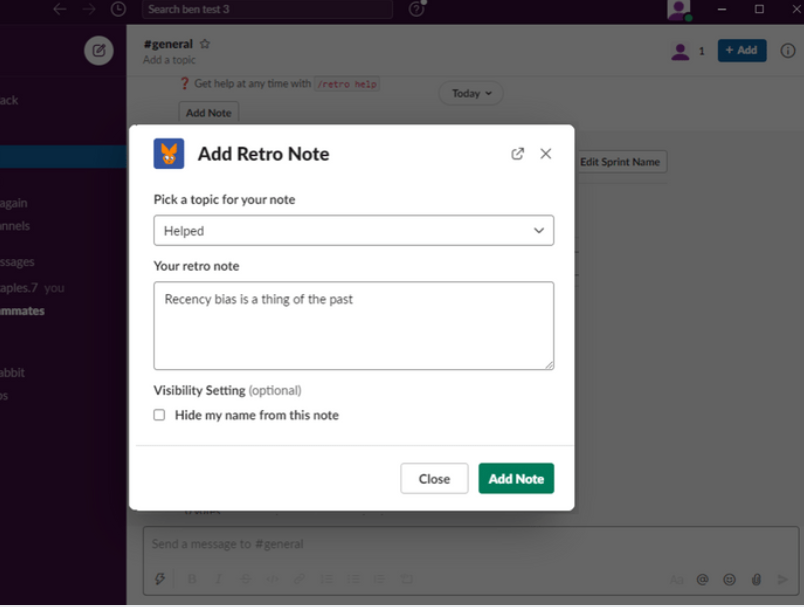
I ran a recent poll on LinkedIn to understand what the biggest pain points of retrospectives are.
While it seems like everyone has something they could optimize about their retrospectives, here were the top three problems that stood out the most:
- 45% of poll participants said that their number one retrospective problem is that the meeting takes too long
- 27% of poll respondents mentioned that they just don’t have enough retrospectives
- 27% of people surveyed mentioned they struggle to remember what happened during the sprint
The Retrospective Meetings Take Too Long
Some teams can have incredibly long retrospective meetings. Oftentimes teams can also just feel that the retrospective meetings are too long compared to the value teams are getting from their meeting.

What are some ways to more effectively use your retrospective time?
Literally shorten the meeting
Yes, it sounds silly, but some teams have built the habit of having two or even three hour long retrospective meetings. While this can enable certain teams to really dig deep and get to the true learnings behind surface level team issues, over time, extended meeting times will drive a lazier and more apathetic atmosphere.
Even if your team is used to longer retrospective meetings, try shortening the time allotted and see what happens. There are some risks here, for example on teams where everyone goes through and shares each idea individually, you may hit a point in the meeting where you realize not everyone will get to share their complete list of thoughts.
As a result of a tighter time constraint, your team may naturally get into a rhythm of extracting key points from retrospective discussions earlier.
For example, many teams rely on voting to hone in on key points the team would like to discuss instead of going through every single retro item. After main ideas and themes have been highlighted initially for the retrospective, everyone votes to align on what the group will use the remainder of the meeting time to talk about.
Many great things can come out of a shorter meeting and while the idea isn’t rocket science, if your team feels that the total time allotted is too long, try changing things up and seeing what happens. Worst case it doesn’t work out and you shift back to your normal routine at your next retrospective meeting.

Use a timer for the meeting
Different teams can find different levels of value from specific parts of the retrospective meeting. Here are some examples of values that different teams can reap from retrospectives in different ways.
Hearing new ideas
In the normal flow of work, new ideas can get left on the side of the road. Each team has their own dynamics of who the most vocal members are, and who the introverted quiet folks are. If not given a space to communicate, quiet members who can have tons of ideas may never feel like they have the room to share them.
One of the biggest benefits teams can have from retrospectives is providing the room for everyone on the team to share observations about the work in a space where everyone is listening and is heard.
Venting
While not relevant to every team, sometimes work can be frustrating. Retrospectives can often be a good place for teams to vent (in a healthy way) about something that they are working on. While this might not be valuable to every team, many find this incredibly cathartic and helpful for inter team dynamics.
Grounding on action items
Some teams rely heavily on action items created at the end of retrospectives to improve and iterate. Others don’t bother creating action items after retros because they never get done. However many teams really do see significant benefit from the creation of well thought out action items, definitions of success for those items, and aligning on a clear owner for each one.
Collaboration and team building
The most valuable part of a retrospective can happen in the first 10 minutes and be unrelated to the actual work at hand. As people file into the room, or in these days the virtual call, people catch up on life, make jokes, and just bond as a team more. For some teams, this can be some of the biggest value seen from retrospectives.
So how can a timer help?
A timer can give you leverage to maximize the part of the retrospective that gives your team the most value. Let’s say your team sees the most value from establishing clear action items. In general, it takes this team 20 minutes to ground on those action items. Watch your meeting time and set a timer to make sure you leave enough time in the meeting to give action items the time of day. By allocating more time to one part of the meeting over another, and defending that time from being cannibalized by another part of the meeting, you can maximize the value your team is getting for your retrospective meeting.
Prep ideas before the meeting
For many, over half of the entire retrospective meeting involves the team just sitting there writing out retrospective ideas in silence individually. While the retro meeting does a good job of actually getting everyone to take the time, sit down, and think about how the sprint went; this probably isn’t a good use of the entire teams’ time all at once.
Instead you could ask that everyone writes out their retrospective ideas before the meeting and call out volunteers to read out their already created retrospective ideas.
One way to do this is with Retro Rabbit, a tool that integrates with Slack where anyone on the team can create retrospective notes as you move through the sprint. Those notes are retained and added to a web based retrospective board that follows a format of your choosing (I.E. WWW). Retro Rabbit users of course can still add new items during the retro meeting, but for the most part just start their meeting and go directly into the sharing phase. Definitely a big time saver!
Please note, I am affiliated with Retro Rabbit

Retrospectives are tough to make perfect. But don’t let the concern of having retro meetings that are too long stop you from improving! Iterate and figure out ways to get more value out of less time!
About the author:
Ben Staples has over 7 years of Product Management and Product Marketing eCommerce experience. He is currently employed at Nordstrom as a Senior Product Manager responsible for their product pages on Nordstrom.com. Previously, Ben was a Senior Product Manager for Trunk Club responsible for their iOS and Android apps. Ben started his Product career as a Product Manager for Vistaprint where he was responsible for their cart and checkout experiences. Before leaving Vistaprint, Ben founded the Vistaprint Product Management guild with over 40 members. Learn more at www.Ben-Staples.com
I do Product Management consulting! Interested in finding out more? Want to get notified when my next Product article comes out? Interested in getting into Product Management but don't know how? Want book recommendations?! Contact me!
